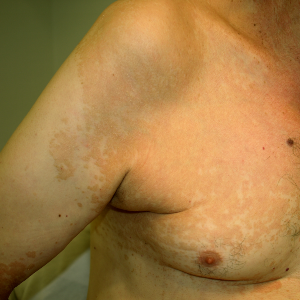 Smart Citations
Smart CitationsSee how this article has been cited at scite.ai
scite shows how a scientific paper has been cited by providing the context of the citation, a classification describing whether it supports, mentions, or contrasts the cited claim, and a label indicating in which section the citation was made.
Pityriasis versicolor: host susceptibility in relation to IL-10 and IFN-γ cytokine gene polymorphism
Pityriasis versicolor is a skin condition caused by the commensal yeast Malassezia. Little is known about the pathogenesis of why a commensal only causes symptoms in a subset of infected individuals. Understanding the susceptibility of the host to these commensal-associated diseases may be facilitated by knowledge of genetic polymorphism. The purpose was to investigate the relationship between Single Nucleotide Polymorphism in the IL10 and IFN genes of the host and susceptibility to Malassezia infection. There were 38 cases of Pityriasis Versicolor (PV) and 38 healthy controls in the sample. Blood samples were extracted for genomic DNA from all study participants. Amplification refractory mutations system- polymerase chain reaction (ARMS-PCR) with sequence-specific primers was used to genotype cytokines. In all patients and healthy controls, three SNPs (IL10-1082A/G; IL10-819/592C/T; IFN– +874A/T) in two cytokine loci were analyzed. In the PV group, we observed significant differences in allele or genotype distribution for the IL10-819/592C/T and IFN– +874A/T gene polymorphisms. In the present investigation, cytokine gene polymorphism revealed that the host was susceptible to Malassezia infection.
How to Cite

This work is licensed under a Creative Commons Attribution-NonCommercial 4.0 International License.

 https://doi.org/10.4081/hls.2023.11302
https://doi.org/10.4081/hls.2023.11302





